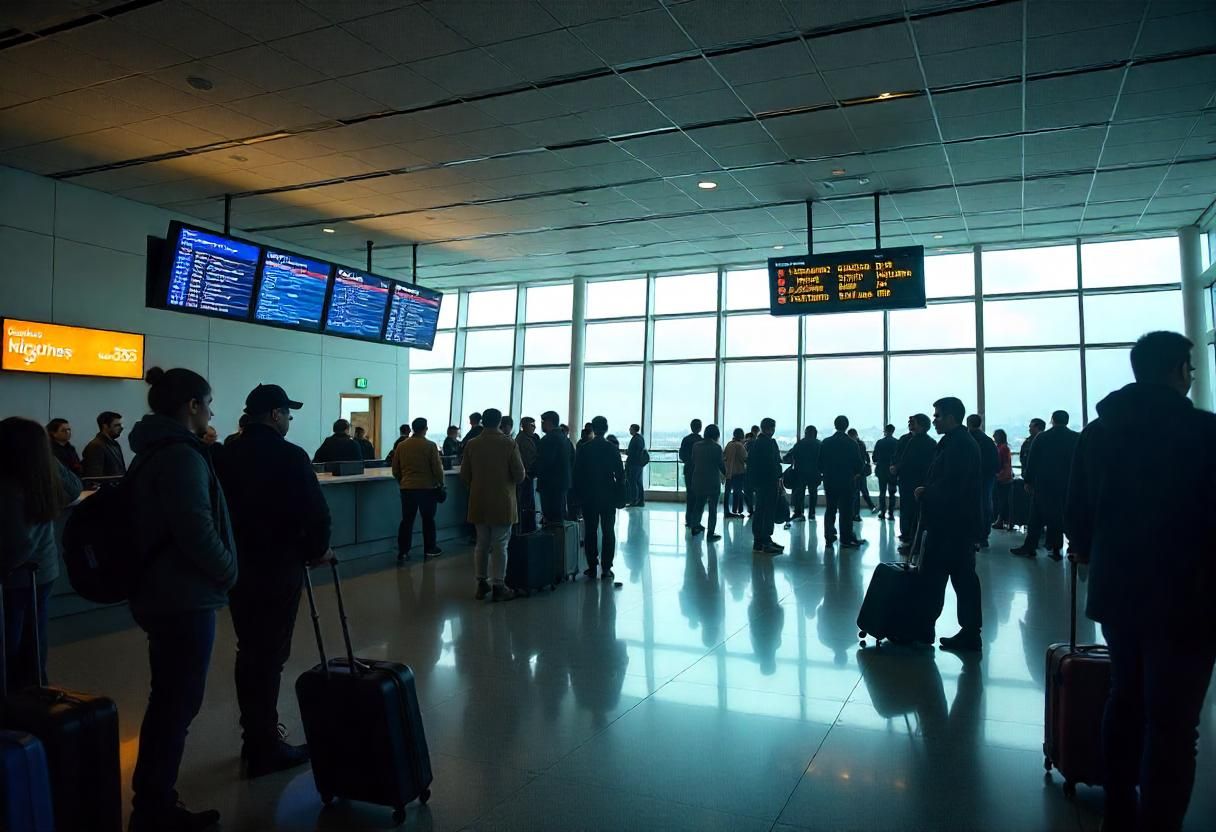Typhoon Wipha Unleashes Havoc on Hong Kong & Macao!

Hong Kong faced severe and widespread disruption as Typhoon Wipha approached, prompting authorities to escalate their tropical cyclone warnings to the highest level. Initially, the Hong Kong Observatory hoisted the T8 warning signal, indicating expected winds with mean speeds of 63 kilometers per hour or more. However, as the storm intensified and drew closer, the warning was escalated to the T10 hurricane alert at 9:20 a.m. local time on Sunday, signifying expected winds with mean speeds of 118 kilometers per hour or more. This marked the first T10 signal issued since Super Typhoon Saola in 2023, which caused 86 injuries and significant damage.
Typhoon Wipha, described as "posing a considerable threat," was located approximately 60 kilometers southeast of Hong Kong and was expected to skirt about 50 to 60 kilometers to the south around noon. Under the influence of its eyewall, hurricane-force winds affected the southern parts of the territory, accompanied by frequent heavy squally showers, thunderstorms, and high seas with swells. Water levels rose significantly, reaching about 3 meters above Chart Datum at Tai Po Kau, and maximum gusts exceeding 103 kilometers per hour were recorded at Tate’s Cairn.
The impact on Hong Kong's transportation infrastructure was immediate and extensive. Nearly 500 to over 500 flights servicing Hong Kong International Airport were cancelled, with airlines like Cathay Pacific halting all flights arriving or departing between 5 a.m. and 6 p.m. on Sunday. The Airport Authority advised travellers to anticipate significant delays and cancellations, stating that no passenger flights were expected to depart before Sunday noon. Public transport services were heavily disrupted; most bus and ferry services were suspended, along with limited MTR lines and suspended open-section operations, including the Light Rail and Airport Express.
Beyond transport, daily life in the city came to a halt. All day schools and daycare centers suspended Sunday's classes, and the annual Hong Kong Book Fair was cancelled. Residents were urged to stay indoors and take precautionary measures, as the Observatory warned that a temporary lull if the eye passed directly over would be followed by a sudden resumption of violent winds. Emergency services responded to multiple reports of fallen trees, and 214 people sought refuge in 34 temporary government shelters. One man was reported to have received treatment at a public hospital for storm-related injuries.
The typhoon's effects extended across the broader region. China's Hainan and Guangdong provinces were put on high alert, with state news agency Xinhua reporting significant flight disruptions. In Macao, the Special Administrative Region declared an "immediate prevention stage," issuing the tropical cyclone Signal No. 8, the third-highest level, along with a yellow storm surge warning. Macao also suspended classes for all educational levels, temporarily closed checkpoints including Border Gate, Qingmao, and Zhuhai-Macao Cross-Border Industrial Zone Checkpoints, and halted all ferry services and local sea tour routes.
Prior to reaching Hong Kong and Macao, Wipha had brought heavy rains and flooding to the Philippines, where two people were reported missing. Experts noted that the warming of the seas is contributing to the increasing intensity of tropical cyclones like Wipha, underscoring the growing threat posed by such extreme weather phenomena.
You may also like...
Haaland's UCL Rampage: Brace, Record, and X-Rated Fury Rocks European Football!

Manchester City were held to a frustrating 2-2 draw against Monaco in the Champions League, despite Erling Haaland's two...
Manchester United's Managerial Maze: Amorim on the Brink, Solskjaer's Ghost Looms

Ruben Amorim faces unprecedented pressure at Manchester United as inconsistent results and a low Premier League standing...
Real-Life Couple Justin Long & Kate Bosworth Unleash 'Coyotes' Horror Comedy, Securing UK Deal

Real-life partners Justin Long and Kate Bosworth star in the new horror comedy and survival thriller “Coyotes,” a film t...
Kenyan Star Bahati Ignites Firestorm with Provocative New 'Seti' Track!

Bahati has ended his musical hiatus with the controversial new song "Seti," featuring explicit content that deviates fro...
Global K-Pop Domination Ignored by Grammys? A Critical Look

Korean pop music has achieved global megaforce status, dominating charts and captivating millions of fans worldwide. Des...
One Direction Reunites! Global Pop Idols Confirm Massive New Project

One Direction stars Louis Tomlinson and Zayn Malik are reportedly reuniting for a Netflix road trip documentary, set to ...
Royal Arrival: Victor & Henrietta Thompson Welcome Baby Princess Zivah!

Gospel singer Victor Thompson and his wife, Henrietta, have joyfully welcomed their baby girl, Zivah Ufuoma Tamunopakiri...
Viral Sensation: M&S 'Cuddle' Jumper Takes Autumn by Storm at Just £26

Discover the M&S Textured Crew Neck Jumper, a viral sensation perfect for colder days. Praised for its luxurious feel, v...



